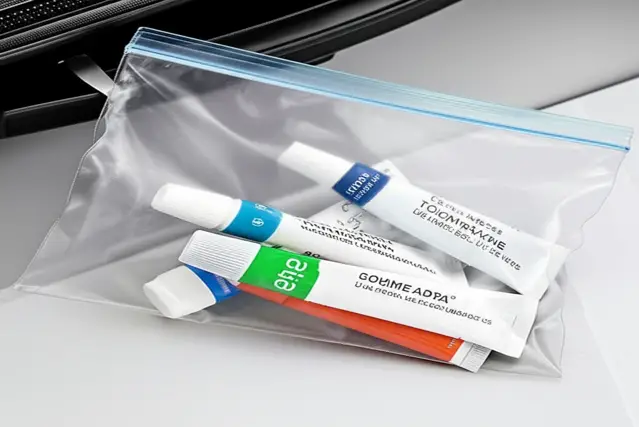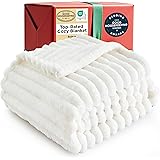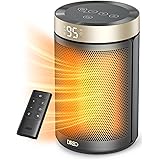Planning a trip and wondering, “Can I bring toothpaste on a plane?” You’re not alone! This is a common question among travelers. Navigating TSA regulations can feel like a maze, especially when it comes to liquids and toiletries. This comprehensive guide will break down the 2025 TSA rules regarding toothpaste, providing you with everything you need to know for a smooth and stress-free journey.
We’ll cover the specific size restrictions, packing tips, alternative options, and even answer frequently asked questions to ensure you’re fully prepared for your next flight. So, pack your bags, grab your boarding pass, and let’s dive into the world of travel-sized toothpaste!
Understanding the TSA’s 3-1-1 Rule
The Transportation Security Administration (TSA) has specific guidelines for carrying liquids, gels, and aerosols in your carry-on luggage. This is often referred to as the “3-1-1 rule.” Understanding this rule is crucial for packing your toiletries, including toothpaste.

What is the 3-1-1 Rule?
The 3-1-1 rule dictates that:
- 3.4-ounce (100 ml) container or less: All liquids, gels, creams, and aerosols must be in travel-sized containers that are 3.4 ounces (100 milliliters) or less.
- 1 quart-sized bag: These containers must fit comfortably in one clear, quart-sized, resealable bag.
- 1 bag per passenger: Each passenger is limited to one quart-sized bag.
This rule applies to all carry-on luggage. If you’re checking your bag, the restrictions are much more lenient, which we’ll discuss later.
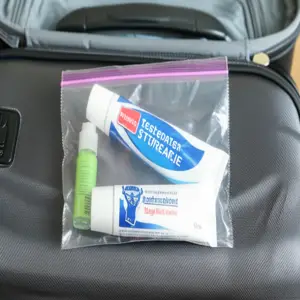
travel toothpaste
Why Does the TSA Have This Rule?
The 3-1-1 rule was implemented in response to security threats involving liquid explosives. By limiting the quantity of liquids, the TSA aims to minimize the risk of potential harm on airplanes. While it might seem inconvenient, it’s a crucial security measure for everyone’s safety.
Toothpaste and the 3-1-1 Rule: The Specifics
So, where does toothpaste fit into all of this? Toothpaste is considered a gel by the TSA and is therefore subject to the 3-1-1 rule. This means that if you want to bring toothpaste in your carry-on, it must be in a tube that is 3.4 ounces (100 ml) or less and fit inside your quart-sized bag.
Example: A standard-sized toothpaste tube often exceeds 3.4 ounces. Therefore, you’ll need to purchase a travel-sized tube or transfer some of your regular toothpaste into a smaller, travel-sized container.
Read More: Can You Bring Cigars on a Plane? Travel Guide
Toothpaste in Carry-On Luggage: Detailed Guidelines
Let’s delve deeper into the specifics of bringing toothpaste in your carry-on luggage, ensuring you’re well-prepared and avoid any hassles at security.
Permitted Types of Toothpaste in Carry-On
The TSA doesn’t differentiate between types of toothpaste. Whether it’s whitening toothpaste, fluoride toothpaste, or even toothpaste for sensitive teeth, the 3-1-1 rule applies across the board. The key factor is the size of the container.
Size Matters: Finding Travel-Sized Toothpaste
Finding travel-sized toothpaste is easier than you might think. Most drugstores, supermarkets, and online retailers offer a variety of travel-sized toothpaste options. Look for tubes specifically labeled as “travel-sized” or check the net weight/volume to ensure it’s 3.4 ounces (100 ml) or less.
Tip: Consider purchasing a reusable travel-sized container. This allows you to refill it with your favorite toothpaste, reducing waste and saving money in the long run.
Packing Your Toothpaste: The Quart-Sized Bag
Once you have your travel-sized toothpaste, the next step is packing it correctly. Remember, all liquids, gels, and aerosols must fit comfortably in one clear, quart-sized, resealable bag. Here are some tips for maximizing space in your bag:
- Choose the right bag: Opt for a high-quality, resealable quart-sized bag. Ziploc brand bags are a popular and reliable choice.
- Prioritize essentials: Pack only the essential toiletries you need for your trip. Consider buying certain items at your destination to save space.
- Arrange strategically: Place larger items, like your toothpaste, at the bottom of the bag and fill in the gaps with smaller items.
- Don’t overfill: Ensure the bag can be easily sealed. Overfilling can lead to it being rejected by TSA.
What Happens if Your Toothpaste Doesn’t Meet the Requirements?
If your toothpaste tube is larger than 3.4 ounces or your quart-sized bag is overfilled, you have a few options:
- Dispose of it: The TSA officer may ask you to dispose of the toothpaste before proceeding through security.
- Check your bag: If you have checked luggage, you can repack the toothpaste into your checked bag.
- Ship it: In some cases, you may be able to ship the toothpaste to your destination, but this is generally not practical for most travelers.
To avoid these scenarios, it’s always best to double-check your toiletries and packing arrangements before heading to the airport.
Toothpaste in Checked Luggage: No Restrictions
If you’re checking a bag, the rules for toothpaste are significantly more relaxed. You can bring full-sized tubes of toothpaste without any restrictions on size or quantity.
Bringing Full-Sized Toothpaste in Checked Bags
In your checked luggage, you can pack your regular, full-sized toothpaste tube without any worries about TSA regulations. This is a convenient option if you’re traveling for an extended period or prefer to use your preferred brand of toothpaste.
Tips for Packing Toothpaste in Checked Luggage
While there are no size restrictions, it’s still a good idea to pack your toothpaste carefully to prevent leaks or damage to your other belongings:
- Seal the tube: Consider placing the toothpaste tube in a resealable plastic bag to contain any potential leaks.
- Pack securely: Pack the toothpaste in the center of your suitcase, surrounded by soft items like clothing, to protect it from being crushed.
Alternative Options: Toothpaste Tablets and Powders
For travelers looking for even more convenience and space-saving options, toothpaste tablets and powders are excellent alternatives to traditional toothpaste tubes.
What are Toothpaste Tablets and Powders?
Toothpaste tablets are small, solid tablets that you chew to create a paste. Toothpaste powders are finely ground powders that you mix with water. Both options offer a lightweight and convenient way to maintain your oral hygiene while traveling.
Benefits of Toothpaste Tablets and Powders
- TSA-friendly: Because they’re not liquids or gels, toothpaste tablets and powders are exempt from the 3-1-1 rule. You can pack them in your carry-on without any restrictions.
- Space-saving: Tablets and powders take up significantly less space than toothpaste tubes.
- Eco-friendly: Many toothpaste tablets and powders come in sustainable packaging and are biodegradable.
- Convenient: They’re easy to use and require no water (for tablets) or minimal water (for powders).
Popular Brands of Toothpaste Tablets and Powders
Several brands offer high-quality toothpaste tablets and powders, including:
- Bite Toothpaste Bits: Known for their eco-friendly ingredients and packaging.
- Lush Toothy Tabs: Available in a variety of flavors and formulations.
- Davids Natural Toothpaste Tablets: Focused on natural and sustainable ingredients.
How to Use Toothpaste Tablets and Powders
Toothpaste Tablets: Simply chew one tablet until it forms a paste, then brush your teeth as usual. Rinse thoroughly.
Toothpaste Powders: Wet your toothbrush, dip it into the powder, and brush your teeth as usual. Rinse thoroughly.
Beyond Toothpaste: Other Toiletries and the TSA 3-1-1 Rule
While we’ve focused on toothpaste, it’s important to remember that the 3-1-1 rule applies to all liquids, gels, and aerosols. Here’s a quick overview of other common toiletries and how they’re affected:
Common Toiletries and the TSA 3-1-1 Rule
| Toiletry | TSA Rule |
|---|---|
| Shampoo | Must be in a container 3.4 ounces (100 ml) or less in your carry-on. No restrictions in checked baggage. |
| Conditioner | Must be in a container 3.4 ounces (100 ml) or less in your carry-on. No restrictions in checked baggage. |
| Lotion | Must be in a container 3.4 ounces (100 ml) or less in your carry-on. No restrictions in checked baggage. |
| Sunscreen | Must be in a container 3.4 ounces (100 ml) or less in your carry-on. No restrictions in checked baggage. |
| Deodorant (Gel or Liquid) | Must be in a container 3.4 ounces (100 ml) or less in your carry-on. Solid deodorant is not restricted. |
| Mouthwash | Must be in a container 3.4 ounces (100 ml) or less in your carry-on. No restrictions in checked baggage. |
| Contact Lens Solution | Must be in a container 3.4 ounces (100 ml) or less in your carry-on. Larger quantities are allowed for medically necessary liquids, but must be declared to the TSA officer. |
Medically Necessary Liquids: An Exception to the Rule
The TSA makes an exception for medically necessary liquids, including medications, baby formula, and breast milk. You are allowed to bring larger quantities of these liquids in your carry-on, but you must declare them to the TSA officer at the security checkpoint.
Tip: It’s a good idea to bring a doctor’s note or prescription for any medically necessary liquids to help expedite the screening process.
Tips for Packing All Your Toiletries
- Use travel-sized containers: Invest in a set of reusable travel-sized containers to decant your favorite products.
- Pack strategically: Place liquids in resealable bags to prevent leaks.
- Consider solid alternatives: Opt for solid shampoo bars, conditioner bars, and deodorant sticks to reduce the amount of liquids you need to pack.
- Buy at your destination: If possible, buy some of your toiletries at your destination to save space and weight in your luggage.
Staying Updated on TSA Regulations
TSA regulations can change, so it’s important to stay updated on the latest rules before your trip. Here’s how to ensure you’re always in the know:
Official TSA Resources
- TSA Website: The official TSA website (www.tsa.gov) is the best source of information on current regulations.
- TSA Mobile App: The TSA mobile app provides helpful information on what you can and cannot bring on a plane.
- Ask TSA on Twitter: You can tweet your questions to @AskTSA for quick answers.
Travel Blogs and Forums
Many travel blogs and forums provide valuable insights and tips on navigating TSA regulations. However, always double-check the information with official TSA resources to ensure accuracy.
Common Misconceptions About TSA Rules
There are many misconceptions about TSA rules, so it’s important to be aware of them to avoid any surprises at the airport:
- Myth: You can bring unlimited liquids in your checked bag. Fact: While there are no quantity restrictions, excessively large quantities may raise suspicion.
- Myth: You can bring any amount of medically necessary liquids without declaring them. Fact: You must declare all medically necessary liquids to the TSA officer.
- Myth: The TSA doesn’t allow any sharp objects. Fact: Certain sharp objects, like small scissors with blades shorter than 4 inches, are allowed in carry-on luggage.
Real-World Examples and Scenarios
Let’s look at some real-world examples and scenarios to illustrate how the TSA rules apply to toothpaste and other toiletries:
Scenario 1: The Overpacked Quart-Sized Bag
Sarah is traveling for a weekend getaway and wants to bring her favorite shampoo, conditioner, lotion, and toothpaste in her carry-on. She manages to squeeze all the travel-sized containers into her quart-sized bag, but it’s bulging at the seams. At the security checkpoint, the TSA officer notices that the bag is overfilled and asks Sarah to remove some items. Sarah has to choose between her favorite shampoo and her toothpaste. She decides to keep the toothpaste and buys a travel-sized shampoo at her destination.
Scenario 2: The Full-Sized Toothpaste in a Carry-On
Mark is rushing to catch his flight and accidentally packs a full-sized tube of toothpaste in his carry-on. At the security checkpoint, the TSA officer notices the oversized toothpaste and informs Mark that he cannot bring it on the plane. Mark has two options: dispose of the toothpaste or check his bag. Mark decides to dispose of the toothpaste and buys a travel-sized tube at the airport.
Scenario 3: Traveling with Toothpaste Tablets
Lisa is a frequent traveler and prefers to use toothpaste tablets to save space and reduce waste. She packs a small container of toothpaste tablets in her carry-on. At the security checkpoint, the TSA officer doesn’t question the tablets, as they are not subject to the 3-1-1 rule. Lisa breezes through security without any issues.
Tips and Tricks for a Smooth TSA Experience
Here are some additional tips and tricks to help you navigate the TSA security process smoothly:
- Arrive early: Give yourself plenty of time to get through security, especially during peak travel times.
- Have your documents ready: Keep your boarding pass and ID easily accessible.
- Remove electronic devices: Take laptops, tablets, and other electronic devices out of your bag and place them in a separate bin.
- Wear slip-on shoes: You may be asked to remove your shoes, so wear slip-on shoes for convenience.
- Be prepared to remove outerwear: Jackets, coats, and scarves may need to be removed and placed in a bin.
- Cooperate with TSA officers: Follow their instructions and answer their questions honestly.
The Future of TSA Regulations
The TSA is constantly evolving its security procedures and technologies. In the future, we may see advancements in screening technology that could potentially change the 3-1-1 rule. For example, some airports are testing advanced scanners that can more accurately detect explosives in liquids.
Keep an eye on official TSA announcements for any updates or changes to the regulations.
Statistics and Trends in Air Travel and Security
Understanding the broader context of air travel and security can provide valuable insights into the rationale behind TSA regulations.
Growth in Air Travel
Air travel has been steadily increasing over the years, with projections indicating continued growth in the future. According to the International Air Transport Association (IATA), passenger numbers are expected to reach record levels in the coming years. This increase in air travel necessitates enhanced security measures to ensure the safety of passengers and crew.
TSA Screening Statistics
The TSA screens millions of passengers and their baggage every day. According to TSA statistics, they confiscate thousands of prohibited items, including liquids, gels, and aerosols, each year. These statistics highlight the importance of adhering to the 3-1-1 rule and other TSA regulations.
Trends in Security Technology
The TSA is continuously investing in new security technologies to improve screening efficiency and effectiveness. These technologies include advanced imaging technology (AIT), explosive detection systems (EDS), and computed tomography (CT) scanners. These advancements aim to enhance security while minimizing inconvenience to travelers.
Packing List for Carry-On and Checked Baggage
To help you stay organized, here’s a comprehensive packing list for your carry-on and checked baggage, focusing on toiletries and personal care items:
Carry-On Packing List (Toiletries)
- Travel-sized toothpaste (3.4 ounces/100 ml or less)
- Travel-sized shampoo (3.4 ounces/100 ml or less)
- Travel-sized conditioner (3.4 ounces/100 ml or less)
- Travel-sized lotion (3.4 ounces/100 ml or less)
- Travel-sized sunscreen (3.4 ounces/100 ml or less)
- Travel-sized deodorant (gel or liquid, 3.4 ounces/100 ml or less)
- Travel-sized mouthwash (3.4 ounces/100 ml or less)
- Contact lens solution (travel-sized or declared medically necessary)
- Hand sanitizer (travel-sized)
- Toothbrush
- Floss
- Lip balm
- Makeup (travel-sized or solid forms)
- Medications (with prescription if necessary)
Checked Baggage Packing List (Toiletries)
- Full-sized toothpaste
- Full-sized shampoo
- Full-sized conditioner
- Full-sized lotion
- Full-sized sunscreen
- Full-sized deodorant
- Full-sized mouthwash
- Makeup
- Hair styling products
- Shaving cream
- Perfume/cologne
- Any other toiletries you prefer to use
Read More: Can I Bring An Air Pump On A Plane?
Addressing Common Travel Anxieties
Traveling can be stressful, and concerns about security regulations can add to the anxiety. Let’s address some common travel anxieties and provide tips for managing them:
Fear of Confiscation
Many travelers worry about having their belongings confiscated at security. To minimize this risk, thoroughly review the TSA regulations before your trip and carefully pack your bags accordingly. Double-check that all liquids, gels, and aerosols are in travel-sized containers and properly packed in your quart-sized bag.
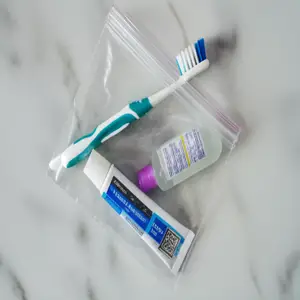
TSA compliant toothpaste
Delays at Security
Long security lines can be a major source of stress. To avoid delays, arrive at the airport early, have your documents ready, and follow the TSA’s instructions. Consider enrolling in TSA PreCheck or Global Entry to expedite the screening process.
Lost or Damaged Luggage
The possibility of lost or damaged luggage can be a significant concern. To protect your belongings, pack valuables and essential items in your carry-on. Consider purchasing travel insurance that covers lost or damaged luggage. Take photos of your luggage and its contents before your trip to help with any potential claims.
Flying with Children
Traveling with children can be challenging, especially when it comes to navigating security. Be prepared for extra screening and allow plenty of time. Pack snacks, drinks, and entertainment to keep your children occupied. Familiarize yourself with the TSA’s rules regarding baby food, formula, and breast milk.
Ethical Considerations of Travel and Consumption
As responsible travelers, it’s important to consider the ethical implications of our travel choices and consumption habits. Here are some ethical considerations to keep in mind:
Environmental Impact
Air travel has a significant environmental impact due to carbon emissions. Consider offsetting your carbon footprint by donating to environmental organizations or choosing more sustainable travel options, such as train travel or direct flights. Reduce your consumption of single-use plastics by bringing reusable water bottles, shopping bags, and containers.
Supporting Local Economies
When traveling, make an effort to support local businesses and economies. Shop at local markets, eat at local restaurants, and stay at locally owned hotels. This helps to ensure that your travel dollars benefit the communities you visit.
Respecting Local Cultures
Be mindful of local customs, traditions, and etiquette. Dress appropriately, learn a few basic phrases in the local language, and be respectful of religious sites and cultural practices. Avoid engaging in activities that could be harmful or offensive to local communities.
Responsible Tourism
Choose tour operators and travel companies that prioritize responsible tourism practices. Look for companies that are committed to environmental sustainability, community development, and ethical treatment of animals. Avoid activities that exploit or endanger wildlife.
Resources for Sustainable Travel
There are many resources available to help you plan more sustainable and ethical travel experiences:
- Sustainable Travel International: A non-profit organization that provides resources and certifications for sustainable tourism.
- The International Ecotourism Society: A global network of ecotourism professionals and organizations.
- Green Global Travel: A blog that provides tips and advice on sustainable travel.
- BookDifferent: A booking platform that highlights hotels and accommodations with sustainable practices.
Preparing for Your Trip: A Checklist
Use this checklist to ensure you’re fully prepared for your trip and avoid any last-minute surprises:
- [ ] Book flights and accommodation
- [ ] Check passport validity
- [ ] Apply for visas (if necessary)
- [ ] Purchase travel insurance
- [ ] Pack your luggage
- [ ] Review TSA regulations
- [ ] Prepare your quart-sized bag with travel-sized toiletries
- [ ] Download boarding passes and travel documents
- [ ] Inform your bank and credit card companies of your travel plans
- [ ] Arrange for transportation to and from the airport
- [ ] Charge electronic devices
- [ ] Pack essential medications
- [ ] Notify your neighbors or arrange for someone to check on your home
- [ ] Set an out-of-office message for your email
- [ ] Confirm travel arrangements
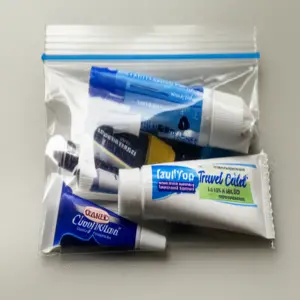
airplane toiletries
FAQ: Frequently Asked Questions
Can I bring a travel-sized toothpaste tube that is slightly over 3.4 ounces in my carry-on if it’s almost empty?
No, the TSA’s rule is based on the container size, not the amount of liquid inside. Even if the tube is almost empty, if the container is larger than 3.4 ounces (100 ml), it will not be allowed in your carry-on luggage.
Are toothpaste tablets allowed in carry-on luggage?
Yes, toothpaste tablets are allowed in carry-on luggage because they are not considered liquids or gels. You can pack them without any restrictions.
Can I bring a full-sized toothpaste tube in my personal item?
No, the same rules apply to your personal item as to your carry-on luggage. Any liquids, gels, and aerosols must be in containers that are 3.4 ounces (100 ml) or less.
What if I have a medical condition that requires a special type of toothpaste?
If you have a medical condition that requires a special type of toothpaste, you can bring a larger quantity in your carry-on, but you must declare it to the TSA officer at the security checkpoint. It’s a good idea to bring a doctor’s note or prescription to support your claim.
Can I buy toothpaste after going through security at the airport?
Yes, most airports have shops that sell travel-sized toiletries, including toothpaste. This is a convenient option if you forget to pack toothpaste or if your toothpaste is confiscated at security.
Are there any exceptions for toothpaste for babies or young children?
The TSA generally applies the same rules to toothpaste for babies and young children. However, if you have a medical reason for needing a larger quantity, you can declare it to the TSA officer and provide supporting documentation.
Can I bring toothpaste in my carry-on if I have TSA PreCheck?
Yes, even with TSA PreCheck, you still need to follow the 3-1-1 rule for liquids, gels, and aerosols in your carry-on luggage. TSA PreCheck primarily expedites the screening process, but it doesn’t exempt you from the rules regarding prohibited items.
Can I bring toothpaste in a travel-sized container that is not clearly labeled with the size?
It’s best to use containers that are clearly labeled with the size to avoid any confusion at the security checkpoint. If the container is not labeled, the TSA officer may ask you to estimate the size or may confiscate it if they are unsure.
What should I do if my toothpaste is confiscated at security?
If your toothpaste is confiscated at security, you have a few options: dispose of it, repack it into your checked bag (if you have one), or purchase a travel-sized tube at the airport. You can also ask the TSA officer for clarification on why the item was confiscated.
Are electric toothbrushes allowed in carry-on luggage?
Yes, electric toothbrushes are allowed in carry-on luggage. There are no restrictions on bringing electric toothbrushes through security. However, make sure to remove the toothbrush head and pack it separately in your quart-sized bag if you plan to bring toothpaste as well.
Conclusion: Final Thoughts
So, can you bring toothpaste on a plane? The answer is a resounding yes, as long as you adhere to the TSA’s 3-1-1 rule for carry-on luggage or pack it in your checked baggage. Understanding these regulations, staying informed about any changes, and packing strategically will ensure a smooth and stress-free travel experience. Whether you opt for travel-sized tubes, convenient toothpaste tablets, or simply pack your favorite full-sized toothpaste in your checked bag, you have plenty of options to maintain your oral hygiene while on the go.
Remember, the key to successful travel lies in preparation and knowledge. By taking the time to familiarize yourself with the TSA rules and packing efficiently, you can avoid unnecessary delays and frustrations at the airport. Furthermore, considering sustainable and ethical travel practices can help you minimize your impact on the environment and support local communities. Safe travels, and don’t forget to brush!

